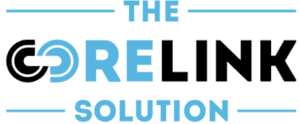How To Master Work-Life Balance in 5 Easy Steps
How do you master work-life balance? Inquiring minds want to know.
Imagine trying to balance on a seesaw all day—fun at first but exhausting if you can’t find a stable point, right?
That’s a lot like trying to handle the demands of a hectic job and a personal life without a clear boundary. Today’s world moves at a breakneck pace, and with smartphones and laptops, work can follow us everywhere—even into our living rooms.
It’s no wonder that, according to HR Dive, 65% of employees reported feeling burnout last year alone.
Achieving a sense of balance is not just about managing your schedule; it’s about carving out time that’s reserved just for you or for spending with loved ones.
It’s about feeling good when you log off after a productive day, not drained and dreading the next. Getting this balance right is crucial for your mental peace and physical health, ensuring you’re not just surviving each day, but genuinely enjoying it.
What Does Work-Life Balance Mean?
Work-life balance is about ensuring that your job doesn’t take over your life but enhances it. It’s arranging your day so that you can succeed at work and still have the energy left to live your life to the fullest. Maybe it’s managing to fit in a morning jog before emails start pinging or being present for family dinners without glancing at your phone every few minutes.
Each person’s balance might look different—some might need to firmly turn off their work notifications after 6 PM, while others might delegate tasks better to preserve their weekends. The key is using technology wisely so it helps rather than hinders your quality of life. Ultimately, it’s about choices—choices that help maintain your energy, keep you engaged with your loved ones, and ensure you’re not always playing catch-up with your own life.

Why Is Work-Life Balance Important?
Having a solid work-life balance is like having a good insurance policy—it safeguards your health, happiness, and productivity. When people achieve this balance, they naturally experience lower stress levels, enjoy better overall health, and feel more connected and satisfied with their jobs.
This not only leads to less absenteeism at work but also sparks creativity and loyalty among employees.
On a personal level, it guards against burnout, that overwhelming feeling of exhaustion that can consume you when stress goes unchecked for too long.
For companies, promoting a culture that values personal time as much as professional achievements can attract and retain top talent—people who want to perform well because they feel valued and understood.
In short, when work-life balance is right, everyone benefits—employees stay healthier and more motivated, and companies thrive with a vibrant, productive workforce.
Signs of Unhealthy Work-Life Balance
Have you ever felt like you’re just going through the motions, constantly tired, no matter how early you hit the bed? That overwhelming exhaustion isn’t just about your body needing rest—it’s about your mind and emotions being on overdrive, too. When work stretches into your supposed downtime, encroaching on your sleep and personal peace, it’s a clear sign that your work-life balance is tipping dangerously.
Chronic stress might sneak up on you, showing its face as sudden bursts of irritation, unexplained headaches, or a weighty feeling of sadness that doesn’t seem to lift. It’s more than just bad days; it’s a signal that your connections to those who matter most could be fraying at the edges.
If you find yourself routinely skipping out on coffee dates or missing the kids’ bedtime stories for work, take note. Or perhaps those hobbies that used to light you up now hardly spark interest—these are signs that your job is stealing more than just your time. And when your off-hours are haunted by work worries, stopping you from unwinding and recharging, it’s definitely time to step back. It’s more than tweaking schedules; it’s about reclaiming the joy and space for life beyond the office.
How to regain your work-life balance?
- Plan Ahead- Planning ahead is a foundational step in regaining work-life balance. It involves prioritizing tasks, setting realistic goals, and scheduling them in a way that allocates time for both work and personal activities. Use calendars or planning apps to visualize how your day or week looks. Start by identifying your most important tasks and fitting other less critical tasks around them. Planning helps manage your workload effectively and ensures you have reserved time for relaxation and personal pursuits, which are crucial for maintaining overall well-being.
- Optimize Your Time- Optimizing your time is like fine-tuning an instrument—ensuring every note plays just right. Use time-blocking to dedicate specific chunks of your day to focus entirely on what’s in front of you, minimizing distractions like social media pings or endless email alerts. This method is not just about squeezing tasks into every available minute but about completing them with enough time to relax. It’s about clearing the clutter, focusing on what needs to be done, and then stepping back to enjoy life without work hanging over your head.
- Build A Support Network- Think of your support network as your personal cheer squad—those who cheer you on when you succeed and lift you up when you stumble. This group includes anyone who matters in your life, from family and friends to colleagues who can share the load when deadlines loom large. Open up about your struggles and victories. At work, this might mean collaborating on big projects; at home, it’s about sharing life’s ups and downs. This circle of support isn’t just helpful; it’s essential, making the tough days easier and the good days even better.

- Set Boundaries- Setting boundaries is like setting rules for a game—it makes sure everyone knows what to expect and how to behave. Tell your team when you’ll be logging off, and make it a point to disconnect entirely from work to truly enjoy your personal time. This means no emails after dinner and reserving weekends for fun and family. These boundaries aren’t just guidelines but promises to yourself to keep work from consuming your joy. It’s about protecting your time so you can live your life entirely on both sides of the workday.
- Manage Expectations- Managing expectations is understanding that some days, your work will need you more, and other days, your personal life will call louder—and that’s perfectly fine. Talk openly with those around you about what’s possible on any given day. Embracing flexibility in balancing your time can take the pressure off and introduce a sense of calm to your routine. This approach is about recognizing that life isn’t always neatly balanced but that you can find harmony in the ebb and flow. It’s not about achieving perfection but finding peace in your daily life’s rhythm.
How can managers help their employees with their work-life balance?
Imagine managers as the guiding lights in navigating the delicate balance between work demands and personal life. They can set the stage by first walking the walk themselves—showing their teams that it’s perfectly fine to log off on time and take those well-deserved breaks. It’s about more than just telling; it’s about doing. Managers can lead by example, adopting and promoting flexible work setups like remote work days or varied office hours to accommodate personal commitments, whether it’s picking up kids from school or attending a mid-day yoga class.
But their role doesn’t end there. Managers are also the guardians of their team’s workload. By closely monitoring regular one-on-ones, they can spot when the scales tip too far towards overload and can step in to redistribute tasks or offer additional support. This could be as simple as providing access to workshops on time management or as supportive as personal check-ins to ensure stress isn’t piling up.
Moreover, it is key to cultivate an atmosphere where everyone feels safe to talk about their work-life needs—without any fear of side-eyes or career setbacks. Recognizing efforts and results, not just the hours put in, also helps to create an environment where people feel valued for what they achieve, not just how long they sit at their desks.
Managers who listen and respond to their team’s work-life balance concerns build happier, more productive teams and foster a workplace culture that attracts and retains top talent.
For more practical tips on how managers can effectively support work-life balance, resources like BetterUp’s blog are invaluable.
Where Work And Life Coexist
Think of achieving work-life balance as sculpting your ideal day where your job and your personal life harmoniously coexist. In today’s non-stop rush, where work can easily creep into evenings and weekends, maintaining this balance is more vital than ever. It’s not just about clocking hours efficiently; it’s about making sure those hours enrich your life, not deplete it.
Decide what’s non-negotiable—maybe it’s dinner with the family, morning runs, or turning off your email after 6 PM. Surround yourself with people who uplift you and share the load when things get too heavy. Each of us will paint this picture differently, and that’s perfectly fine. It’s about constructing a life that feels right for you, advocating for what you need to remain vibrant and whole. By doing this, we enhance our lives and contribute to a culture that values deep, genuine well-being.
If this article has inspired you, please subscribe to our newsletter to be alerted when the next piece is released. You can also support the continued creation of this content by making a tax-deductible donation.




